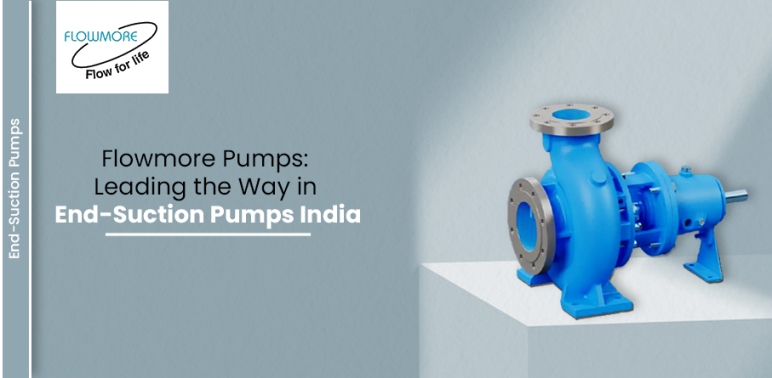Propeller pump article gives direction and audit about various sorts, characteristics, durability’s, and costs. The pump is a pump in which liquid flows axially to the revolution of the propeller. In Axial flow, the liquid flows corresponding to the pivot of turn, as in a turbine. Propeller pump contains a propeller or divergent impeller in the packaging.
Propeller Pump Definition
An impeller is the turning part of a divergent pump that quickens the liquid inside the pump. The propeller is fueled by a fixed engine or outer electric force, gas motor or other force sources.
The liquids pick up speed, and it is changed into pressure as the liquid leaves the pump. Liquid particles don’t change their outspread areas while flowing since the range at the attractions and the release of the pump are unaltered or of little variety.
Propeller Pump Working
A propeller pump comprises a propeller-type impeller running in the packaging. The propeller is fueled by an engine. At the point when the liquid flows over the cutting edges of the impeller, the weight is created. The liquid flows the equal way to the shaft of the impeller. Hence, the liquid never alters its axial course at the delta and release of the impeller.
In axial pumps, the impeller pushes the fluid toward the path corresponding to the pump shaft. Propeller pumps work like the propeller in boats and can likewise be called as propeller pumps. Propeller pumps apply the divergent power to the liquids getting across the impeller.
At the point when the diffusive power gets more prominent than the gravitational power holding the liquid, the liquid ascents and flows outside the line. Here the change of energy is finished utilizing the precise force standards. The axial flow or propeller pump is the opposite of the axial flow turbine and is resemble the other the same in appearance.
Choice and Specification
While choosing a Propeller pump, we need to think about the accompanying key details as follows.
Flow rate – the rate at which the liquid flows through the pump, estimated in gallons every moment (GPM). The flow rate and the evaluated limit of pumps should coordinate for smoother activity.
Weight – opposition power per unit region, the pump should deal with, depicted in bar or psi.
Head – stature up to which the liquid is lifted over the pull channel. It is communicated regarding length as meter or feet.
Net positive attractions head (NPSH) – the distinction between the pump’s channel pressure head and the fume pressure head. NPSH is determined to stay away from the cavitation issues in pumps.
Yield power-power delivered or given by the pump. Furthermore, it is estimated in Horsepower(HP)
Information power-power needed by the pump for activity. What’s more, it is additionally estimated in Horsepower(HP)
Effectiveness – The proportion between the info power and the yield power. It just portrays us the measure of info power used for pumping activity.

Application
Propeller pumps are discovered basically in sewage treatment plants and agrarian water system. They are likewise utilized in fisheries flood-control activity, substance businesses, power plants, and so forth One of the most straightforward applications utilized in our everyday life is the hand pump through which the pump get the water supply from the under the ground. Here our human exertion is the force supply which drives the water supply from the underground.
In horticulture and fisheries, these pumps are utilized to pump water for water system purposes and waste of the undesirable water. They can give a huge flow of water from close by stream to crops. In East Asia, more modest ranchers utilize this sort of pumps for the crop water system, seepage, and fisheries. In the sewage treatment plant, they are utilized for the exchange of liquids across the various transports and stores. The heading of the flow is handily turned around in these kinds of pumps.
Propeller pumps circle a lot of fluid in evaporators and crystallizers in synthetic businesses. They have likewise utilized in flood catastrophe the executive’s framework since they can pump out a lot of water during emergencies time. One such model was they are utilized in the flood control framework in New Orleans, Louisiana where the stormwater is put away in a trench and later pumped to the close-by lake. In this way saving a large number of lives and aiding in water stockpiling moreover.
Advantages
- Useful for the high flow rate, low-pressure applications.
- High release (flow rate) at a generally low head
- Effectively be acclimated to run at top productivity
- Lower streamlined misfortunes and higher stage efficiencies because of shortcutting edge lengths.
- More modest in measurements so natural to deal with and use.
Disadvantages
- Try not to deal with exceptionally gooey liquids well.
- Not appropriate for high-pressure applications
Costs
A portion of the main Propeller Pumps Manufacturer India make these pumps accessible from little flow paces of 0.5 cubic m/h to as extensive as controlling floods during the cataclysmic event.
They have a wide scope of flow rates. This sort of pumps is accessible at a value scope of around 100$ to 500$ for homegrown purposes and around 5000$-20000$ for huge scope farming water system and sewage purposes. Ventures normally request their particular pumps according to their necessities in their applications.











